Manuel Vallejo
Manuel Vallejo, a Friend of the Museu Nacional, explains some of his memories from youth related to the spaces of the museum that he has uncovered during lockdown.
Already fifteen years before the initiative “Barcelona posa’t guapa” (Barcelona, make yourself beautiful) our building and sites attracted the attention of the international cinema industry. The film “The Great White Hope” forms part of the history of the city…and of the extras.
Some job offers with special requirements
On 2nd December 1969 in the Job Offers of La Vanguardia some advertisements of “20th Century Fox” appeared requesting extras for the shooting of a film on Montjuïc and in other locations in Barcelona. The texts stated that: “All people with purely French and German characteristics and features, who want to take part as extras in the shooting of our film, have to go through a prior selection process in the casting offices”. Another said, “All people of colour, mixed-breeds, mulattoes, and looking like Mexicans and Cubans will have to go through pre-selection through the casting offices.”


A group of friends were contacted and we were called to the Palace of Alfonso XIII; after a brief glance by the specialist, some of us were hired, including the writer, for the three locations and days of shooting. We were not told what the plot of the film as a whole was, nor each venue for the shooting.
The settings were chosen, for their noucentista atmosphere
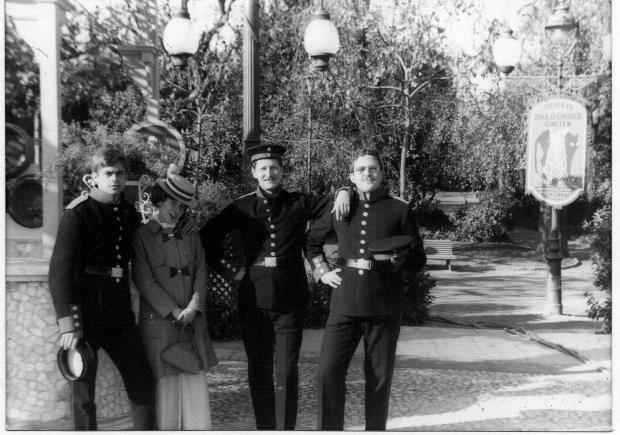
The filming locations were chosen for their respective architectural and environmental similarities to the scenes performed by the protagonists. The Parc de la Ciutadella was included to be the Gischer Garten Zoo in Berlin. The entrances to the Museu Nacional d’Art de Catalunya and part of the Oval Room were chosen to represent the Vélodrome d’Hiver in Paris, the venue for the night-time boxing match. The old Montjuïc Stadium represented the Havana Stadium, the scene of the final boxing match and The End of the film.
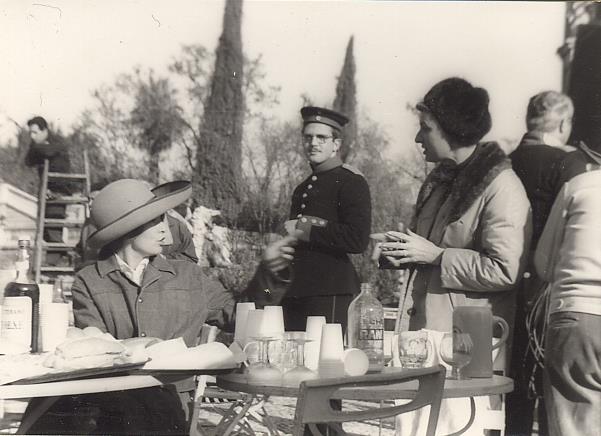
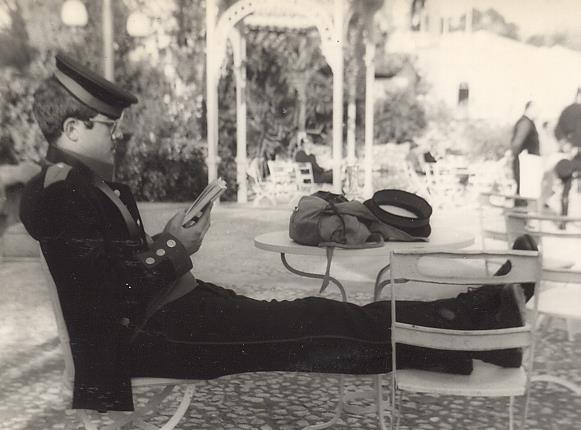
The first filming took place on a sunny day of the “Innocent Saints” (28th December) of 1969 in the Parc de la Ciutadella. The recordings at the old Montjuïc Stadium were in January 1970, shortly after Reis (Kings’ Day – 6th January) when it was particularly cold; the worst part is that we were featured as spectators in short sleeves and white shirts on some open-air stands in Havana, cheering in a boxing match held by the main actors.
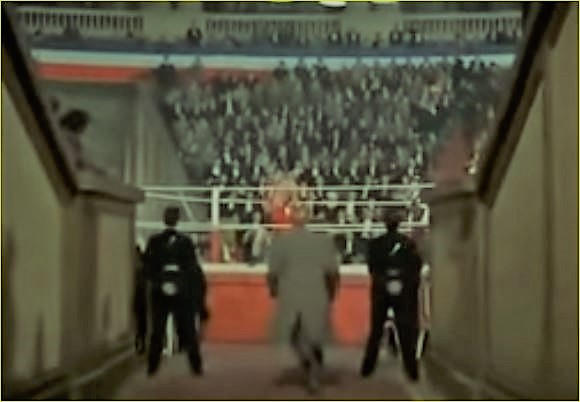

The Magic Fountain showed off its magic!
The location of the third shoot, at night, took place going up the stairs of the main entrance of the then Palau Nacional, now the Museu Nacional, with the extras carefully dressed up in formal attire. The negotiators of Barcelona City Council, especially thanks to the good work of the then councillor of the City Council, Esteban Bassols, performed the miracle: they assured Century Fox that the illumination of the Magic Fountain, at that time very deteriorated, would work during the shooting, and magically it did!
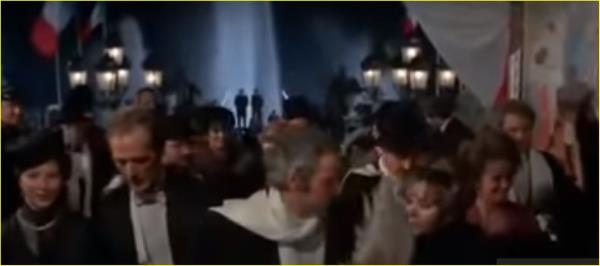
Coincidentally, from among the Austrian German soldiers at the Gischer Garten in Berlin there was Xabier Elorriaga, who later acquired well-deserved notoriety in film and television with notable roles in “The Burnt City”, “Thesis” and “Isabel Católica”, among many others.
A plot with a history of racism that, alas, has been repeated!
As I warned you at the beginning, “the facts described were mostly true”. The Great White Hope included periods in the life of black American Jack Johnson. In the film, under the name of Jack Jefferson, he had just defeated Frank Bardy in Reno in 1914 and became the first black boxer to be a world heavyweight champion. However, it was the 1900s and Jack, travelling with his girlfriend Eleanor, a white woman, had crossed the boundaries of a racist state. Arrested on a charge of interbreeding, he was tried and sentenced to three years in prison; but he escaped from prison and left for Europe with his partner. His life would become a constant flight, suffering emotional conflicts in several cities, holding boxing matches in Paris (represented in the film) to raise funds, etc. His reputation plummeted, and in a fight fought in Havana he lost his title at the hands of a white boxer.

Reaction to the film in the box offices of the United States
The performances of James Earl Jones and Jane Alexander were especially appreciated, as it received the Tony Awards for Howard Sackler’s original play, the 1969 Pulitzer Prize, and the 1969 Tony. The film, directed by Martin Ritt, highlighted social and racial inequalities, a strong, uncompromising film with a heavy burden of social and gender denunciation; it was positively received both by the public and the critics. The actors, little known until then, were nominated for an Oscar for Best Performance in 1969; then they shone in their respective careers, with the role of Earl Jones in Kunta Kinte being unforgettable. The actor commented in a documentary about Jack Johnson that “to know the story of Jack Johnson is to know that it is a study of arrogance and pretension”.
In relation to the box office revenues of FOX, it seems that overall it was not very profitable, and it was rented on TV (the person writing this was able to see it, totally surprised, on an intercontinental flight a few years later!).
Barcelona newspapers in 1968-1970: articles about the shooting and premiere
Angel Zúñiga, a New York chronicler of La Vanguardia, recounted, on 30th October, 1968, the staging on Broadway of “The Great White Hope” by Howard Sackler. It was quite possibly the first reference to this play in the Spanish press.
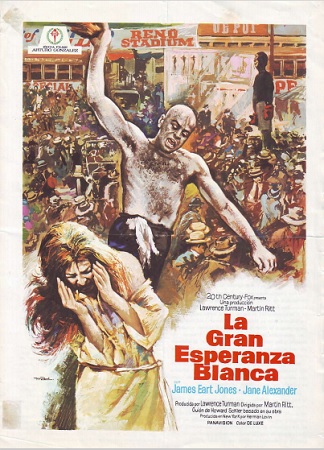
The journalist Jaime Arias, from the same newspaper, on 14th January, 1970, on the dates of the recording in Montjuïc, described very interesting details about the shooting in progress. In addition, in the first part of his chronicle he predicted about what should happen in the world of cinema in the 70s and 80s, foreseeing video, CDs and DVDs. Of course, what he couldn’t even imagine would be the advent of the internet and the whirlwind of streaming.
In the film section of the newspaper La Vanguardia of 14th March, 1972, Angeles Masó wrote about the premiere at the Regio Vistarama cinema in Barcelona. She made a gesture of complicity towards the people of Barcelona, writing: “Barcelona, as you will remember, has been the setting for the film in important sequences: The Parc de la Ciutadella represents Berlin Zoo; with the Estació de França being the station of Budapest.” The chronicler praised the main performers, the remarkable atmosphere and the crowds surrounding the “winner”. She ends her review with these words written almost fifty years ago (alas, read now, they are once again painful): “The spirit that animates the film and that focuses on this already distant episode – the great hope of white Americans , which consists of exercising supremacy over the black race – is unfortunately still current and this causes the problem itself, beyond being an anecdote, to impact on the spectator.”
In Barcelona, in 2017 and in 2020, “the fight of the century continued”
The Museu Picasso held the exhibition, 1917-Picasso in Barcelona, from October 2017 to January 2018. Coincidentally, the Arthur Cravant. Maintenant? exhibition was held on the same dates.
The exhibition was about artistic figures from 1915-1920 in Barcelona. Cravant, the pseudonym of a British nephew of Oscar Wilde, was a well-muscled giant of over two metres tall, to whom some organisers proposed a boxing match against Johnson, who was in Europe fleeing American justice and already at the decline of his boxing career. The “Great Boxing Festival” was held in Barcelona, in the Plaça Monumental, on 23rd April, 1916. A magnificent book-catalogue by various authors on the life and miracles of the giant and the exhibition was published by the Museu Picasso, describing him as a “mystical colossus, a forerunner of the Dadaist adventure“. As we say in our country, “to fill seats”: as such, the newspapers of the time tell us that 4,500 people paid between 2 and 36 pesetas to see the 110 kg black man”. (sic)
In June 2020, in the magazine SAPIENS, Frederic Porta published a documented article on the life and details of the death of Jack Johnson.
In the Sala Beckett in Barcelona in October 2020 the play “The Fight of the Century” was premiered, created and directed by Costa Rican Denise Duncan, based on a play by Jack London and on the two productions of “The Great White Hope” mentioned above. It included the issue of racism and the emotional problems of the protagonist with his partner. There is the original note that several events are based in Barcelona when the boxer lived there for the so-called “fight of the century” with the Briton Cravan, as we have already mentioned. The whole work, well set to music, has aspects of “all colours” (double-entendre). Wow! The performance was suspended due to the second wave of the pandemic on November 1, 2020 (see the chronicle of Justo Barranco in La Vanguardia, on 22nd October).
A particular process, a revival with Friends
Writing this article over several stages of the 2020 lockdown allowed me to re-watch the entire film several times, and to choose the appropriate photos I took on the sets, some of which I share here. I have been discovering locations shot in Barcelona that I had not recognised, as is the case of Estació de França under the “Budapest” sign in the film.
I saw the above-mentioned play at the Sala Becket and was able to read a number of articles on the subject.
All in all, it has let me relive fond memories and understand new aspects of the script and the making of the film; and also of the time, of the Barcelona from 1917-1920, an already cosmopolitan and somewhat abject city, when Jack Johnson discovered it: he came for two months to fight at the Monumental and stayed here for almost three years, becoming the “boss of Parallel”.
It would be interesting to see a good copy of the film at the Museu Nacional, with the “Barcelona extras of that time”, some “aged” commentators who, in addition to the social and gender denunciation, could comment on aspects of the production, the work of extras and the environments of the early 1900s in Barcelona, recreated for filming. It’s an idea!







